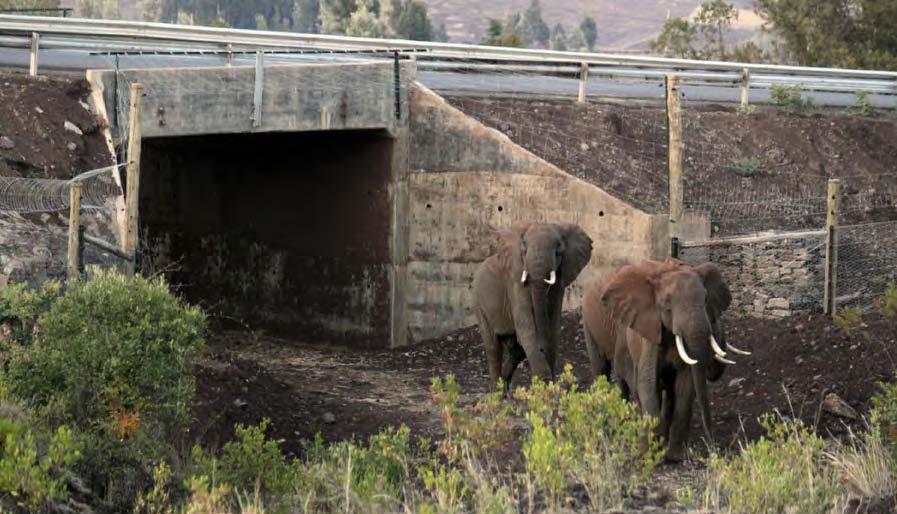

This month, there is some exciting news for animals trying to cross the road. The winners were announced in the ARC International Wildlife Crossing Infrastructure Competition and elephants starting using the first ever highway underpass constructed to help these large mammals in Africa.
On Sunday 22 January, Landscape architects Michael Van Valkenburgh Associates (MVVA) and the construction firm HNTB won the first-ever international competition to design an overpass for wildlife use. Their design, one of many submitted for the competition, was recognized for its foliage-covered pre-cast concrete span that, in the architects’ telling, could rise over roads anywhere cars and animals collide, whether the highways of West Virginia or a major interstate in Colorado. The ARC competition sets the stage for wildlife crossing to pop-up around the country, with public and government support, to decrease vehicle-wildlife collisions.
Near the slopes of Mt.Kenya, a new underpass connects two elephant habitats that had been cut off from each other for year by human development. Photos show that one bull elephant (Tony) and two younger elephants were the first to use the underpass, just days after it opened. Iain Douglas-Hamilton, founder of Save the Elephants, commented “All over Africa this incredible wildlife is increasingly being fragmented by the growing human population, and if African wildlife is to survive, solutions must be found of this nature, where connectivity is preserved through corridors.”
These great development for connectivity highlight how important it is not just to protect land but to make sure that protected areas are connected to one and other. Isolated populations won’t survive in the long-term because of lack of genetic diversity and, just like humans, wildlife benefit from moving freely without major interferences such as highways, walls or other impassable structures. Connectivity is a key part of Nature Needs Half.